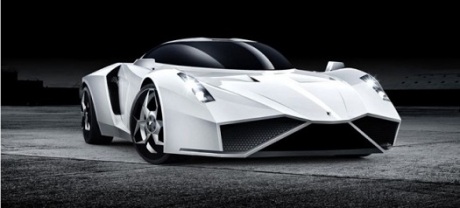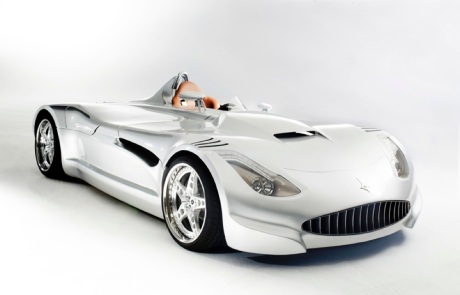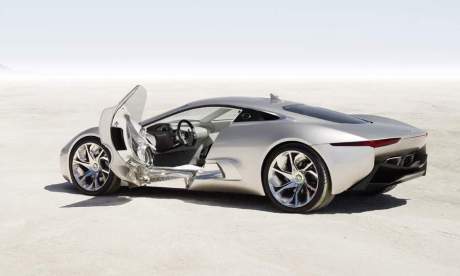Fracking pumps as many as 900 unregulated chemicals into the ground to open rock beds to get at the oil and gas. The Halliburton Loophole exempts oil companies from major environmental laws, like the Clean Air, Clean Water, and Safe Drinking Water acts. Drillers do not have to reveal what is in the six million gallons of watery chemicals they pump into these wells that have been known to contaminate drinking water. Of course the companies owning these leases want to get at it, but the truth is, fracking isn’t needed. We do have alternatives.

This is my 1994 Chevrolet Electric Car, totally battery operated, still running in 2005 on its original battery pack. It’s range was only 48 miles. Near the end of its life, it could only make it to the grocery and the dump and back, about 14 miles. That was old battery technology. My 2001 Prius is still running on its original battery pack and gives no signs of stopping anytime soon.
The mass-produced Nisson Leaf and the Chevy Volt are all doing well. 2011 was a big year for electrics and growing. Well known dependable companies have come out with electric vehicles that work beyond expectations. They are so good, they’ve become luxury cars for the rich. Hundreds of new electric vehicles are out there, and here are some of the top green cars, as listed by Gas.2.0.

Hydrogen Ferrari. This is a student designed concept car and isn’t on the road-yet! But Id’ like to crawl into one of those. It would make me look 20 years younger.

Rimac Automobilli EV One is a working model with 1,088 horsepower, and a driving range of almost 400 miles. Snazzy, beautiful. The future is here if we have guts enough to say no to big oil.

Brabus 4WD Hybrid Mercedes is a diesel-electric hybrid that provides performance as well as efficiency. This vehicle uses Proton’s in-wheel hub motors for propulsion and improved get-up-and-go.

e-Wolf Alpha 2 EV, with a driving range of 185 miles, a 0-60 mph time of under 4-seconds, and a price tag of over $400,000. Top speed? 230 mph, supposedly. Slated for limited production, none of us are likely to afford one of these, but dreams to come true, and if it weren’t for dreamers, we’d be back in the dark ages.

The only natural gas car that made the list. Maximus LNG 2000 has a highly modified all-aluminum V8 engine that can produce 1,500 horsepower. A 2,000 horsepower version named the Prodigy is also in the works. I’m not big on natural gas but I didn’t make the list and don’t consider it a really green car like electrics.

Porsche Spyder EV plug-in is prohibitively expensive, but Gas.2.0 admires Porsche for working tremendously hard to integrate hybrid drive trains into their performance vehicles. Porsche is at the forefront of luxury performance hybrids and will probably continue to play with hybrids in the years to come. Good news for all of us.

Veritas Plug-In Hybrid, again, isn’t all electric but these carmakers are concentrating on performance. A barely street legal racer, the Veritas RSIII uses a 600 horsepower 5.0 liter BMW V10 to power the rear wheels, and an electric motor providing another 140 horsepower for the front wheels. An on board flywheel energy recovery system can charge the batteries while driving, or be plugged into a standard outlet, providing up to 30 miles of all-electric driving.

Jaguar CX75 EV was debuted as a twin-turbine concept car late last year and has been greenlighted for production…sans the turbines. It will keep the plug-in hybrid system, allowing the wheel-mounted electric motors to deliver up to 30 miles of all-electric range, as well as a 0-60 mph time somewhere in the 3-second range. What’s the cost for this beauty? Put your wallet back. About 1.4 mill. Hey, somebody will buy it! The future is looking very snazzy.

This is my 1994 Chevrolet Electric Car, totally battery operated, still running in 2005 on its original battery pack. It’s range was only 48 miles. Near the end of its life, it could only make it to the grocery and the dump and back, about 14 miles. That was old battery technology. My 2001 Prius is still running on its original battery pack and gives no signs of stopping anytime soon.
The mass-produced Nisson Leaf and the Chevy Volt are all doing well. 2011 was a big year for electrics and growing. Well known dependable companies have come out with electric vehicles that work beyond expectations. They are so good, they’ve become luxury cars for the rich. Hundreds of new electric vehicles are out there, and here are some of the top green cars, as listed by Gas.2.0.

Hydrogen Ferrari. This is a student designed concept car and isn’t on the road-yet! But Id’ like to crawl into one of those. It would make me look 20 years younger.

Rimac Automobilli EV One is a working model with 1,088 horsepower, and a driving range of almost 400 miles. Snazzy, beautiful. The future is here if we have guts enough to say no to big oil.

Brabus 4WD Hybrid Mercedes is a diesel-electric hybrid that provides performance as well as efficiency. This vehicle uses Proton’s in-wheel hub motors for propulsion and improved get-up-and-go.

e-Wolf Alpha 2 EV, with a driving range of 185 miles, a 0-60 mph time of under 4-seconds, and a price tag of over $400,000. Top speed? 230 mph, supposedly. Slated for limited production, none of us are likely to afford one of these, but dreams to come true, and if it weren’t for dreamers, we’d be back in the dark ages.

The only natural gas car that made the list. Maximus LNG 2000 has a highly modified all-aluminum V8 engine that can produce 1,500 horsepower. A 2,000 horsepower version named the Prodigy is also in the works. I’m not big on natural gas but I didn’t make the list and don’t consider it a really green car like electrics.

Porsche Spyder EV plug-in is prohibitively expensive, but Gas.2.0 admires Porsche for working tremendously hard to integrate hybrid drive trains into their performance vehicles. Porsche is at the forefront of luxury performance hybrids and will probably continue to play with hybrids in the years to come. Good news for all of us.

Veritas Plug-In Hybrid, again, isn’t all electric but these carmakers are concentrating on performance. A barely street legal racer, the Veritas RSIII uses a 600 horsepower 5.0 liter BMW V10 to power the rear wheels, and an electric motor providing another 140 horsepower for the front wheels. An on board flywheel energy recovery system can charge the batteries while driving, or be plugged into a standard outlet, providing up to 30 miles of all-electric driving.

Jaguar CX75 EV was debuted as a twin-turbine concept car late last year and has been greenlighted for production…sans the turbines. It will keep the plug-in hybrid system, allowing the wheel-mounted electric motors to deliver up to 30 miles of all-electric range, as well as a 0-60 mph time somewhere in the 3-second range. What’s the cost for this beauty? Put your wallet back. About 1.4 mill. Hey, somebody will buy it! The future is looking very snazzy.
No comments:
Post a Comment